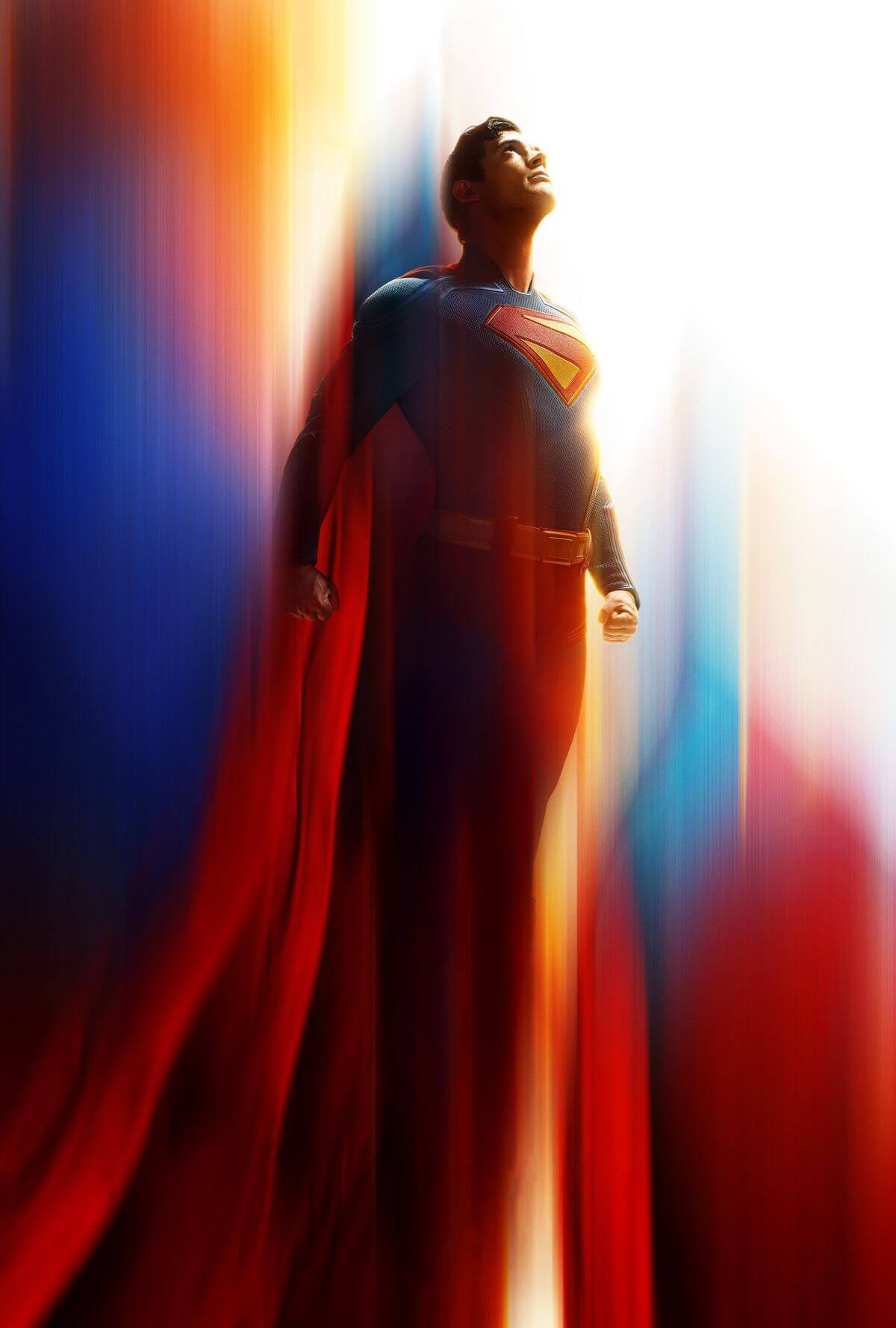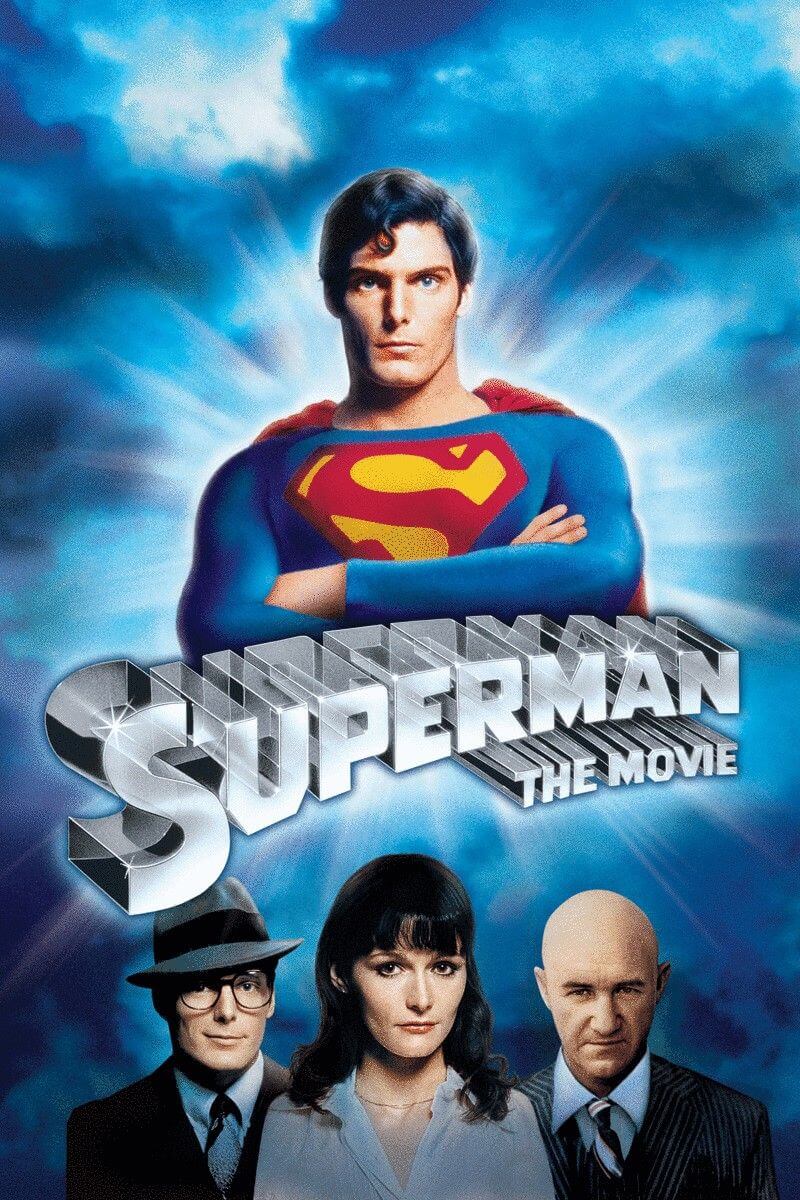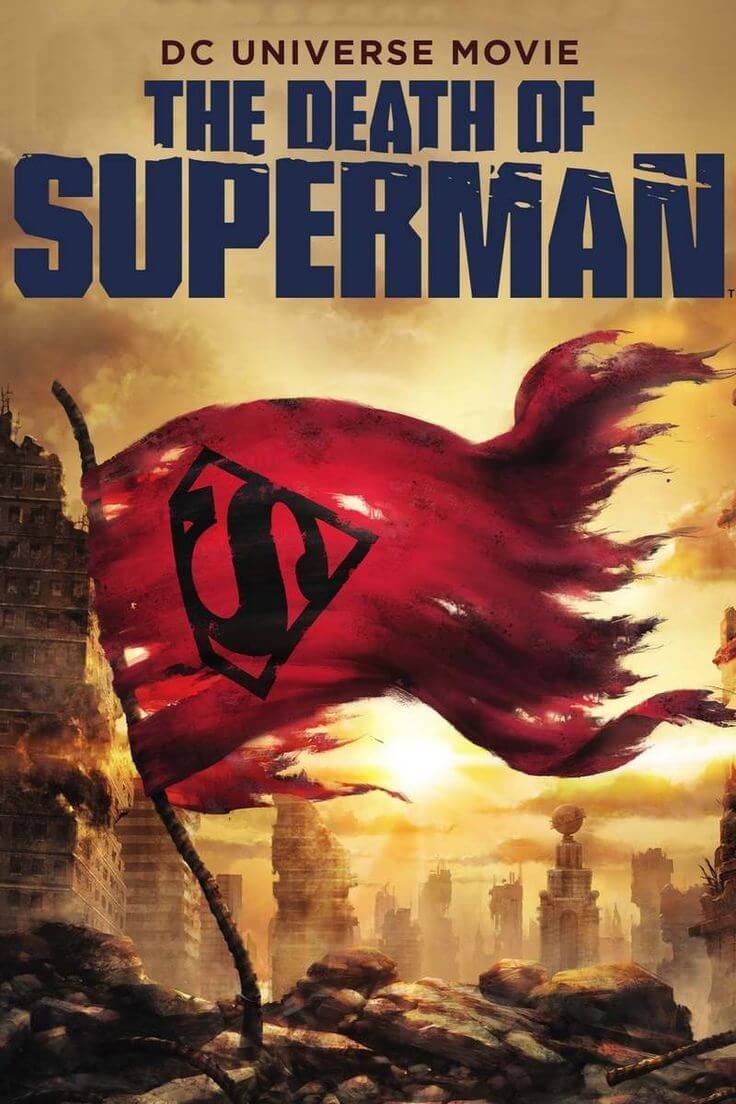
It’s not a bird or a plane. It’s the newest “Superman” movie, and it’s already soaring at the box office. James Gunn’s rebooted take on the Man of Steel pulled in a staggering $56.5 million on Friday alone, following $22.5 million in Thursday previews.
With projections nearing $130 million for opening weekend, the 2025 Superman film has become more than just another superhero release . It’s a cultural reset for DC Studios.
“This is a Superman movie for the modern era,” said Paul Dergarabedian, senior media analyst at Comscore. Unlike previous adaptations, this version embraces a lighter tone and a hopeful spirit.
That’s exactly what’s making it click with both longtime comic fans and newer, family-oriented audiences. It currently holds a strong 82% on Rotten Tomatoes, with a 95% audience score on the Popcornmeter, suggesting that word-of-mouth will continue to drive its success.
Superhero fatigue has weighed down recent films like The Marvels, but Superman appears to be breaking the cycle. As Shawn Robbins of Fandango put it, this movie stands out because of its optimism, and because people still want heroes they can root for.
Superman is more than a superhero. He’s the blueprint. The moment he appeared on the cover of Action Comics #1 in 1938, the world was introduced to the idea of a caped, sky-flying figure who stood for truth, justice, and hope.
This character became the foundation of modern superhero culture, inspiring generations of writers, filmmakers, and fans across the globe.
How the Superman Story Began
In the middle of the Great Depression, two Cleveland teenagers—Jerry Siegel and Joe Shuster—dreamed up a superhuman character who could fight injustice and protect the weak. Life wasn’t kind in the 1930s.
Jobs were scarce, poverty was widespread, and the idea of a powerful figure standing up for ordinary people hit a nerve.
Both Siegel and Shuster were sons of Jewish immigrants, and their creation reflected a longing for hope, fairness, and justice in a world that seemed stacked against the underdog.
Their first version of Superman in 1933 looked nothing like the one you’re familiar with today. He was a bald telepathic villain obsessed with world domination, more mad scientist than hero.
That concept didn’t gain traction, but they didn’t stop. They believed in the core idea: a being with extraordinary abilities and a bigger purpose.
They kept tweaking, rewriting, and drawing, working late nights while holding onto day jobs to support their families. They even tried shopping Superman to dozens of publishers, only to be turned down repeatedly.
By 1938, their perseverance paid off. They reimagined Superman as a hero from the doomed planet Krypton, rocketed to Earth as a baby and raised by a humble farming couple in Kansas.
This new Superman wasn’t just powerful. He was raised to be kind, honest, and responsible. His story mixed science fiction with something more grounded: small-town American values. That blend struck a chord with readers instantly.
He has the power to level cities, but chooses compassion.
DC Comics finally gave the idea a shot by publishing the character in Action Comics #1. That issue, now one of the most valuable comic books in existence, hit shelves in June 1938, and everything changed. The popularity of Superman exploded almost overnight.
That one decision from DC didn’t just launch a new character; it gave birth to an entirely new genre of storytelling. Every superhero that came after, from Batman to Black Panther, owes a little something to Superman’s debut.
Creating Superman wasn’t an accident. It was a product of grit, timing, and two young creators who genuinely wanted to imagine a better world. And once the world saw that big red “S” on his chest, there was no turning back.
Superman Across Media: Radio, TV, and Animation
Once Superman became a hit in comic books, it didn’t take long before he started popping up in living rooms across America. The Adventures of Superman radio show launched in 1940 and instantly became a favorite.
It aired during a time when families would gather around the radio every evening. Actor Bud Collyer brought Superman to life with his distinct vocal shift—mild-mannered Clark Kent speaking softly and clearly, then suddenly deepening his voice when transforming into Superman.
That simple voice trick became a defining feature of the character for decades. It’s even where the famous catchphrase, “This looks like a job for Superman!” first made its debut.
The leap to television followed soon after. In the 1950s, George Reeves became the first live-action Superman on the small screen in The Adventures of Superman. Black-and-white footage, limited effects, and low budgets didn’t stop the show from becoming a hit.
Reeves had a charming presence that made you believe Superman truly cared about the people he was saving. The series helped stamp the red cape and bold “S” into popular memory, especially among baby boomers who grew up watching it on grainy screens.
Even in animation, Superman stood tall. The Max Fleischer cartoons from the early 1940s were groundbreaking. Long before CGI or even decent color saturation, these shorts looked and felt cinematic.
They were expensive to make and required rotoscoping techniques, essentially tracing over live-action footage frame by frame, to create smooth, lifelike motion.
As a kid, I saw these cartoons and thought they looked cooler than half the stuff being made today. That art style still holds up remarkably well.
By the 1990s, a new generation got introduced to Superman through Superman: The Animated Series. This version, led by Bruce Timm and Paul Dini, took the core values of Superman and layered in modern storytelling, emotional depth, and stunning visuals.
It wasn’t just a Saturday morning show. It was a fully realized world. It tackled everything from alien invasions to moral dilemmas, all while keeping Clark Kent grounded and relatable.
A lot of fans, including myself, still rank it as one of the best animated series ever produced in the superhero genre.
Seeing how Superman moved from static comic panels to live voices and moving pictures really shows how flexible the character is. Whether it was through radio waves, grainy TV broadcasts, or digital animation, he kept finding ways to fly into people’s lives, and stay there.
Superman’s Leap to the Big Screen
Superman became a global icon with the release of Superman: The Movie in 1978, starring Christopher Reeve. For many, that film defined what a superhero movie should feel like.
Reeve struck the perfect balance, awkward and charming as Clark Kent, then commanding and noble as Superman. It wasn’t just clever acting; it was the kind of performance that made you forget they were the same person.
That duality is what gave the character emotional weight. You saw him as someone real, someone worth believing in.
The film’s visual effects, though simple by today’s standards, were revolutionary at the time. Audiences had never seen a man fly like that on screen. It felt magical. Then there was John Williams’s score: majestic, sweeping, and unforgettable.

The moment that theme kicked in, it was impossible not to get goosebumps. That music still plays in trailers, parodies, and Olympic ceremonies because it’s permanently linked to the idea of heroism.
Following its massive success, three sequels followed: Superman II (1980), Superman III (1983), and Superman IV: The Quest for Peace (1987). The second film is still a fan favorite, especially for its introduction of General Zod and the dramatic showdown between Kryptonians.
The third and fourth movies, though packed with ambition, were hampered by inconsistent storytelling and declining budgets. Still, Reeve’s performance remained solid throughout.
Then came a long silence, nearly 20 years. In 2006, Superman Returns tried to revive the classic feel of the Reeve films. Directed by Bryan Singer and starring Brandon Routh, it leaned heavily into nostalgia.
While it received mixed reviews, some viewers appreciated its emotional depth and faithfulness to the original tone.
The next real shift came in 2013 with Man of Steel, directed by Zack Snyder and starring Henry Cavill. This version of Superman had a more grounded and gritty style. It explored the psychological weight of being an alien raised as human, trying to find his place in a chaotic world.
Some loved its bold approach and visual scale. Others were divided, especially over its darker tone. But one thing was clear: Superman was being reintroduced for a new generation.
After that, Cavill’s Superman showed up in Batman v Superman: Dawn of Justice (2016), Justice League (2017), and Zack Snyder’s Justice League (2021).
These appearances helped shape the DC Extended Universe, connecting Superman to a broader superhero lineup that included Batman, Wonder Woman, Aquaman, and more.
Now, all eyes are on the upcoming 2025 reboot titled simply Superman, directed by James Gunn. This film is set to reset the tone, structure, and direction of the DC Universe.
Gunn has said it will focus on a younger Clark Kent navigating his identity while working as a reporter in Metropolis. After all the darker takes, this one aims to bring back a sense of optimism while keeping things sharp and relevant.
As someone who’s followed Superman’s journey on screen for years, I’m genuinely curious, and hopeful, about what this next version will bring. Every era has had its Superman, and this one might just capture the spirit of the original while speaking to the challenges of today.
Complete Superman Movies List (Live Action)
To help you navigate Superman’s movie history, here are the standalone live-action Superman films that have shaped the legacy of the Man of Steel over the past five decades.
Each film reflects the era it was made in—socially, visually, and culturally—and shows how Superman has evolved to fit changing audience expectations.
Superman: The Movie (1978)
The original blockbuster that set the standard. Christopher Reeve’s performance, the practical flying effects, and John Williams’s score made this film an instant classic.
Superman II (1980)
Often considered one of the best sequels in superhero cinema. This one pits Superman against General Zod and two other Kryptonian criminals in a battle that stretches from Metropolis to outer space.
Superman III (1983)
A tonal shift that brought in Richard Pryor and leaned more into comedy and satire. It’s often seen as a misstep, but it introduced darker themes like Superman’s inner conflict and the effects of synthetic kryptonite.
Superman IV: The Quest for Peace (1987)
An ambitious story that tackled nuclear disarmament during the Cold War. Budget issues held it back, and the film didn’t land well with audiences or critics. Still, it marked Reeve’s final turn as the iconic character.
Without Superman, there probably wouldn’t be a Spider-Man, Captain America, or even Goku from Dragon Ball Z.
Superman Returns (2006)
Directed by Bryan Singer, this film was designed as a soft sequel to the Reeve-era films. Brandon Routh stepped into the cape, bringing emotional weight and vulnerability to the role. It wasn’t packed with action, but it offered moments of real heart and visual grandeur.
Man of Steel (2013)
A complete reboot for the modern age. Zack Snyder gave Superman a grounded origin story, with Henry Cavill exploring what it means to be alien in a world that fears what it doesn’t understand. The film sparked strong reactions, praised for its scale, questioned for its tone, but financially successful and important for launching the DC Extended Universe.
Superman (2025)
The newest entry, directed by James Gunn, is already drawing massive attention. It’s expected to reset Superman’s tone with a more hopeful, youthful take while building a foundation for DC’s new shared universe. Early buzz suggests this one could become a major milestone in superhero cinema.
These entries don’t include Superman’s many ensemble appearances in the DC Extended Universe, like Batman v Superman and Justice League, nor his animated movie roles. Each of these standalone films carries its own identity, shaped by its director, cast, and the cultural moment it was made for.
Watching them in order is like flipping through the pages of pop culture history, and trust me, there’s something rewarding about seeing how one character has kept flying forward all these years.
The Highest-Grossing Superman Movie
Out of all the Superman films released to date, Man of Steel (2013) stands as the highest-grossing, earning over $668 million worldwide. That figure might be even more impressive when you consider that this was a full reboot with a new cast, a fresh tone, and no nostalgic safety net to lean on.
Directed by Zack Snyder, the film was designed to reintroduce Superman to a generation that had grown up with grittier heroes like Batman and Iron Man.
Snyder’s approach leaned into realism. What would it actually mean for a god-like alien to land on Earth and try to live as one of us? It stripped away some of the idealistic shine and added weight to Superman’s choices.
That creative direction led to a lot of conversation. Some viewers appreciated the more grounded tone and intense action. Others questioned the destruction-heavy climax in Metropolis and the moral complexity it introduced.
Henry Cavill’s performance became a major point of discussion. He played Clark Kent as a quiet, emotionally layered character, a man struggling to find purpose in a world that might not accept him.
As someone who grew up watching the bright, clean-cut Superman of the past, this version felt different. But it also felt honest. You could see the internal struggle: someone trying to figure out what kind of man to become, even when he had the power to do anything.
The movie’s success also helped kick off the DC Extended Universe, setting the stage for ensemble films like Batman v Superman: Dawn of Justice and Justice League.
Whether you loved it or didn’t fully connect with it, Man of Steel proved one thing loud and clear. Superman still draws crowds. He still sparks conversation. And he still sells tickets.
Fascinating Facts About Superman You Probably Didn’t Know
Superman’s legacy spans more than 85 years, and during that time, he’s collected enough behind-the-scenes stories, comic lore, and trivia to fill a dozen encyclopedias. Here are some of the most surprising and fascinating facts that even lifelong fans might not know:
1. The original Superman was a villain. In 1933, before the blue suit and red cape, Jerry Siegel wrote a short story called The Reign of the Superman. That early version featured a bald, power-hungry telepath who wanted to dominate humanity, not save it. It was only after a few rewrites that Superman transformed from a tyrant into a hero. That evolution says a lot about the times they were living in and how the idea of power was being reimagined.
2. Superman once died, and it was huge. In 1992, DC Comics released The Death of Superman, a storyline where Superman is killed by a monstrous villain called Doomsday. It was a plot twist that became a global media event. I remember seeing news anchors talk about it like a real person had died. People lined up at comic shops, and the issue sold over six million copies. For many fans, it was their first exposure to a superhero story that didn’t guarantee a happy ending.

3. The “S” means hope. This detail was introduced more clearly in Man of Steel (2013), where Superman explains that the “S” symbol is a Kryptonian glyph representing “hope.” That small shift turned the symbol into something much deeper than branding. It gave his costume more meaning, especially for people looking for something to believe in.
4. Nicolas Cage was almost Superman. In the late ’90s, director Tim Burton was working on a film called Superman Lives, and Nicolas Cage was cast to wear the cape. Yes, really. Cage had already done costume fittings, and concept art showed him in a glowing, electric-blue suit with long hair. The movie was eventually canceled due to script issues and budget concerns, but behind-the-scenes photos still circulate online—and they’re wild. It’s one of the greatest “what could have been” moments in superhero film history.
5. Superman once wielded Thor’s hammer and Captain America’s shield. During the rare Marvel vs. DC crossover events, Superman proved himself worthy to lift Mjolnir (Thor’s hammer) and briefly used Cap’s shield in battle. That’s the kind of fan-service moment that makes comic fans freak out—in the best way. It also speaks to Superman’s character: he may be from another universe, but he stands for values that even Marvel’s greatest heroes respect.
6. Superman influenced countless other heroes. Without Superman, there probably wouldn’t be a Spider-Man, Captain America, or even Goku from Dragon Ball Z. Creators across genres and countries have taken inspiration from his blend of strength, morality, and inner conflict. Spider-Man creator Stan Lee openly admired Superman’s popularity and used it as a benchmark when building Marvel’s own icons. Goku’s origin story—sent from another planet, raised on Earth, destined to protect it—bears a strong resemblance to Superman’s, too.
Learning these details gives you a whole new appreciation for how wide Superman’s reach really is. He’s not just part of comic book history. He’s part of global culture. Every time he’s reinvented, something new is added to the mythos, and these lesser-known facts are part of what keeps the legend so alive.
Superman’s Cultural Impact
Superman became more than a character on a page. He became a symbol. During World War II, he was a morale booster, fighting Nazis on comic covers and encouraging readers to buy war bonds.
In a time when people were desperate for strength and certainty, Superman stood as a larger-than-life protector who made you believe good would win. During the Cold War, his stories often tackled issues of loyalty, power, and truth, mirroring the paranoia and political tension of the time.
Decades later, in a post-9/11 world, Superman had to adapt again. He became more introspective, questioning authority, identity, and his place in a fractured society.
That’s the beauty of his design. His dual identity as both alien and human, strong and humble makes him flexible enough to represent whatever we’re wrestling with as a culture. He has the power to level cities, but chooses compassion.
He could rule, but he helps. That tension between power and restraint has always made him compelling. It’s what still makes him feel relevant, no matter how many decades go by.
Think of Superman like a mirror. Every generation reflects a slightly different image back through him. In the 1970s, he embodied optimism. The world needed to believe someone could fly and still care about catching cats from trees.
In the 2010s, that shine was stripped away. We got a conflicted, searching Superman who wasn’t sure if humanity even wanted to be saved.
Now, with the 2025 reboot, we’re about to meet a new version, one that speaks to a generation growing up in a time of uncertainty, division, and rebuilding. There’s something refreshing about seeing Superman return with a sense of hope again.
Superman also kicked open the doors for an entire industry. Without his 1938 debut, there might be no Batman franchise, no Marvel Cinematic Universe, no endless rows of Funko Pop figures or billion-dollar superhero movies.
He showed the world what a superhero could be and proved people would care. He laid the groundwork for storytelling that blends fantasy with values, strength with emotion. Every cape that’s been worn since then owes something to Superman’s first flight.
What makes all of this even more powerful is how long he’s lasted. Trends in entertainment shift fast. What’s popular today might vanish tomorrow.
But Superman has managed to stick around for more than 85 years and still find new audiences, new forms, and new meaning. That kind of staying power means something. It means we still need what he represents.
Superman’s Legacy Is Here to Stay
You can have all the flashy tech of Iron Man or the brooding intensity of Batman, but Superman represents something far more difficult to pull off: hope without cynicism. That kind of hero doesn’t go out of style. It just becomes harder to find.
I’ll admit, when I was younger, I used to think Superman was too clean-cut, too invincible, too… good. But over time, I realized that kind of goodness takes strength. Real strength. Not the kind that can lift buildings, but the kind that chooses patience over pride, mercy over power.
He doesn’t win just because he’s faster or stronger than the villain. He wins because he refuses to lose faith in people. Even when the world is falling apart, even when it turns on him, Superman steps in with open hands, not closed fists.
You could see the internal struggle: someone trying to figure out what kind of man to become, even when he had the power to do anything.
That mindset is incredibly rare in fiction and even rarer in real life. And maybe that’s exactly why we keep bringing him back.
There’s something timeless about his story. A child sent from a dying planet, raised by human parents, taught to love a world that may never fully accept him. It’s a narrative that feels deeply human despite its alien origin.
That’s the part that sticks with you. That’s why Superman still shows up in new comics, new films, and new conversations nearly a century after his debut.
When you sit down to rewatch Superman: The Movie or line up to see the 2025 reboot, you’re taking part in something bigger than just another superhero flick.
You’re witnessing the evolution of the original template, the first modern superhero, still standing tall while the world around him changes. Not every character can handle that kind of pressure. Superman can. And he’s still flying forward.




